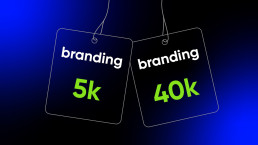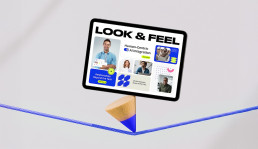
Why You Must Design for Your Audience (Not Just for Yourself)
Design for your audience is the single most important principle in branding, marketing, and web design. Too often, businesses choose colors, fonts, or layouts based on personal preference. While those choices may feel right internally, they don’t always connect with the people who matter most: your customers.
Why Personal Taste Isn’t Enough
It’s natural to want your brand to reflect your personal style. But design isn’t about what you like—it’s about what your audience understands. When you design for yourself, the message often gets lost, engagement drops, and trust is weakened. The truth is simple: what works for you doesn’t always work for your audience.
What It Means to Design for Your Audience
To design for your audience means creating visuals, messaging, and experiences that resonate with the people you want to reach. It’s about empathy, clarity, and connection. Your audience should feel like your brand “gets them” the moment they engage with it.
- They see themselves in your brand
- The message is clear and easy to understand
- Trust grows naturally because your design resonates
The Business Impact of Audience-Centered Design
Design choices affect business outcomes. When you design for your audience, you benefit from:
- Higher Engagement: People stop scrolling and pay attention.
- Stronger Conversions: Clear, relevant design drives action.
- Brand Loyalty: Resonant design creates lasting emotional connections.
- Competitive Advantage: Stand out with audience-driven visuals.
How to Design for Your Audience (Step by Step)
- Know Your Audience: Research demographics, psychographics, and customer feedback.
- Define Brand Messaging: Decide what emotions and values you want to communicate.
- Match Visuals to Expectations: Align design with what resonates in your industry.
- Simplify the Experience: Remove clutter so the message is crystal clear.
- Test and Validate: Use real feedback to ensure your design works.
Common Mistakes to Avoid
- Designing based on personal taste alone
- Copying competitors without audience alignment
- Overcomplicating visuals and losing clarity
- Ignoring accessibility needs
Real-World Example
Imagine two companies launching websites:
Company A chooses trendy fonts and neon colors because the CEO loves them. Visitors are impressed at first glance but quickly leave confused about what the company offers.
Company B researches its audience and uses clear typography, calm colors, and straightforward messaging. Visitors instantly trust the brand and take action.
The result? Company B wins more customers because they chose to design for their audience.
Final Thought: Your Audience Comes First
Your brand isn’t for you—it’s for the people you serve. That’s why design for your audience must be your guiding principle. At Pill Creative Studio, we help brands create designs that not only look good but also work. We blend creativity with strategy, making sure your visuals connect with the right people and deliver real results.
Branding Pricing: Why There’s No One-Size-Fits-All Cost
October 22, 2025
One of the most common questions creative studios hear is: “Why isn’t there a fixed price for branding?” The truth is simple – branding is not a product, it’s a customized process. Every project is different because every business is different. That’s why branding pricing can vary widely, even within the same design studio.
0 Comments7 Minutes
Your Logo Doesn’t Need to Explain What You Do
October 16, 2025
Logo design is often misunderstood. Many founders want a logo that shows every service they offer - moving, plumbing, coaching, real estate, you name it. But the job of a logo isn’t to explain your catalog; it’s to create instant recognition.
0 Comments8 Minutes
Rebranding Is Not a Design Task for Your In-House Designer — It’s a Business Transformation
September 30, 2025
When companies realize their brand feels outdated, inconsistent, or no longer aligned with their market positioning, the first instinct is often to hand the task to their in-house designer. But here’s the truth: company rebranding is not a design assignment — it’s a full-scale business transformation.
0 Comments7 Minutes



